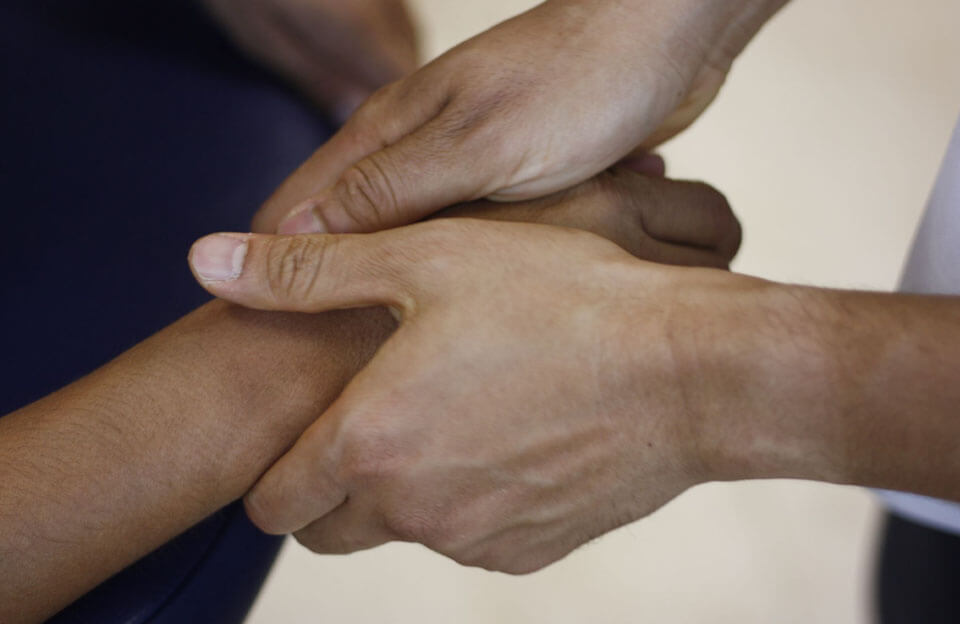Pedicures are a fun way to take care of your feet. And diabetics, who need to take such good care of their feet, may want to add pedicures to their foot care routine. But is it safe for either the diabetic or the pedicurist to get or give a pedicure? Are there special steps diabetics should take before a pedicure? Here are the details.
Common Foot Problems for Diabetics
Diabetics suffer more foot problems than the population in general. There are many different problems that can affect the feet, including:
Ingrown Nails
Ingrown nails occur when the edges of the toenail grow into the flesh of the toe instead of outward. They can happen with any nail, but the big toenail is the most common place for it to happen. Since diabetics often have decreased sensation in the feet, they may not notice the pain that would alert someone to an ingrown nail, and it may become infected as a result. [1]
Dry (Cracked) Feet
The skin on a diabetic’s feet can become dry and cracked over time. This is because the nerves in the feet that normally control skin oils and moisture have been damaged by diabetes. [2]
Reduced Pain Sensation
Over time, the nerves in the feet can become damaged because of decreased blood flow and high blood sugar levels. This leads to diabetic neuropathy, which decreases sensation in the hands and feet. Pain from sores, cuts, and blisters may not be noticed. Temperature sensations can also be reduced, so feet do not feel hot and cold as well. [3][4]
Poor Circulation
When blood sugar is high over a long period of time, the sugars can build up in the blood vessels. This narrows them and makes it harder for blood to flow to other parts of the body. Blood vessels can also narrow from inflammation that is caused by diabetes. Decreased blood flow is most often felt in the extremities or the feet and hands. [5]
Are Pedicures Safe for Diabetics?
Since good foot care is part of diabetes management, pedicures may seem like an indulgence well invested in. And there are many procedures done at a nail salon that can help your feet. However, there are several potential risks. Diabetics are more at risk for infection in their feet, and if the tools at the salon are not disinfected properly, there could be an increased risk. Foot baths at a nail salon could be too hot for feet or could be left in for too long, and neuropathy may make the diabetic unable to feel these problems. Foot baths also carry a risk of infection.
So are pedicures safe for diabetics? There isn’t a yes or no answer to that. There are risks present, but they can be managed. Some diabetics may consider it worth that risk, while others may not. But it is certainly possible for a diabetic to get a pedicure with no problems.
Tips for Going to Nail Salon with Diabetes
To make sure you get the most out of your pedicure with the least risk, there are several tips to remember. These include:
Find a Reputable Salon
Nail salons come in a wide variety of types. And while you can’t make broad judgements based on those types, reputable salons have a few things in common. They have good reviews from clients and a good reputation. They are also licensed and should display a licensing certificate somewhere on the premises.
Confirm Good Sanitation
Find out if people you know have been there and get them to tell you what the sanitation practices are like. Call the salon you want to go to and ask how often they change soaking solutions and whether objects are sterilized after use. Even after doing both these things, visit any prospective nail salon before you make an appointment and take a look around. If it looks in any way unsanitary, you’ll know to cross that one off your list.
Avoid Shaving the Legs
Shaving legs requires a razor, and even the best safety razor can nick your skin. Combine the increased risk of infection from cuts that don’t heal with a razor that has no doubt been used on others, and it all adds up to a big no for shaving your legs.
Avoid Soaking the Feet for a Long Time
As mentioned before, one of the complications of diabetes can be decreased sensation in the feet. This includes pain as well as hot and cold. Any foot baths at the nail salon could be too hot, and you may not notice it. Keep these baths as quick as possible. This will further decrease the risk of infection.
Tell Technician about Your Condition
Tell any technician who works with you that you have diabetes and extra care needs to be taken with your feet. Explain you do not want any metal tools used on your calluses because of the potential for injury, and just rub or smooth them out instead. Remind the technician your toenails should be cut with extreme care, trimmed with a clipper and filed with an emery board instead of anything harsher.
Go To a Medical Spa
Medical spas are sort of a combination between a typical day spa and a medical clinic. They often offer what is called a medical pedicure, where nail care procedures are combined with typical podiatrist treatments. Since they are performed by podiatrists, the person doing the pedicure can spot signs of trouble in the feet that non-medical professionals may miss. Any instruments are sterilized before and after use. [6]
Just like with any nail salon, you should check out any medical spa you want to visit. Even if it has a great reputation, if you visit and discover it to be dirty or otherwise unprofessional looking, it’s not a place you want to get a pedicure.
FAQ
How Often Should a Diabetic Get a Pedicure?
Diabetics should look after their feet daily. Most people can’t afford to go to the nail salon that often, but it’s not unreasonable for a diabetic to get pedicures twice a month.
Can I Have a Pedicure at Home?
You can try to approximate a pedicure at home by doing it yourself. There are kits available that can help you recreate your salon experience.
When to Consult my Doctor?
Consult your doctor about your feet if they are swollen, have changed shape, have any cuts or sores that won’t heal, or smell a bad smell from a cut or a sore. These are signs of serious foot problems.
Final Thoughts
Pedicures are an easy way to let yourself be taken care of by someone else for a while. And for diabetics, who need to take more care with their feet than non-diabetics, it can seem especially appealing.
Diabetics should take more caution than others in choosing a nail salon for a pedicure and keep additional precautions in mind. But as long as those are in place and met by the salon, there’s no reason a diabetic can’t enjoy one from time to time like anyone else.
References
- Ingrown toenails – Symptoms and causes. (n.d.). Mayo Clinic. https://www.mayoclinic.org/diseases-conditions/ingrown-toenails/symptoms-causes/syc-20355903
- Take Charge of Your Diabetes: Healthy Feet | Diabetes | CDC. (2021, February 5). Www.cdc.gov. https://www.cdc.gov/diabetes/library/factsheets/diabetes-and-healthy-feet.html
- National Institute of Diabetes and Digestive and Kidney Diseases. (2019, April 19). Diabetes and Foot Problems | NIDDK. National Institute of Diabetes and Digestive and Kidney Diseases. https://www.niddk.nih.gov/health-information/diabetes/overview/preventing-problems/foot-problems
- Peripheral Neuropathy | NIDDK. (2018, February). National Institute of Diabetes and Digestive and Kidney Diseases. https://www.niddk.nih.gov/health-information/diabetes/overview/preventing-problems/nerve-damage-diabetic-neuropathies/peripheral-neuropathy
- How Does Diabetes Cause Poor Circulation? – Baptist Health. (n.d.). Www.baptisthealth.com. Retrieved March 20, 2023, from https://www.baptisthealth.com/blog/family-health/how-does-diabetes-cause-poor-circulation
- Miltiadou, G. (n.d.). What is a Medical Pedicure or Medi Pedi? | Foot Centre Group. Https://Www.footcentregroup.com.au/. Retrieved March 22, 2023, from https://www.footcentregroup.com.au/blog-medical-pedicure/


